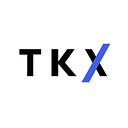MetaStreet: A New Path to NFTFi | TKX Weekly
by @uuwagyuu
sponsor TKX CAPITAL
MetaStreet, an NFT-fi protocol, has recently raised $25 million from prominent investors like @rewkang, @dcfgod, and @dingalingts, adding to a previous $14 million investment. This success is complemented by its victory at the Blast Big Bang Competition. A major challenge for many NFT projects is their illiquidity — owning digital art or collectables that are hard to sell. Although numerous NFT-fi protocols have attempted to solve this issue, none have fully succeeded yet. However, MetaStreet’s innovative approach might just change the game. Today, we will explore what MetaStreet does.
Intro
MetaStreet is making waves in the NFT-Fi space with its different solutions to the liquidity problem facing NFT owners. By introducing the Automatic Tranche Maker (ATM) and Liquid Credit Tokens (LCTs), MetaStreet is setting a new standard for how non-fungible tokens can be used as collateral for financial activities. The ATM brings a new way of organizing NFT-backed loans into different risk categories, making it easier for investors to understand and participate in the market. LCTs, on the other hand, turn these loan positions into liquid assets, allowing them to be easily traded or used within the DeFi ecosystem.
Solution
MetaStreet is changing the game with its Automatic Tranche Maker (ATM) and making NFT lending a whole lot easier and safer:
- Oracleless Design: Ditching the need for centralized price oracles, the ATM makes everything more straightforward. You won’t have to stress about price manipulations or relying on outside data anymore. This means safer and more direct loan-to-value calculations.
- Dynamic Interest Rates: Instead of sticking with fixed rates set by some boards, MetaStreet’s system adjusts interest rates based on real deposit activity. So, you get rates that truly reflect what’s happening in the market, benefiting both lenders and borrowers.
- Permissionless Lending Pools: With MetaStreet, anyone can kickstart a lending pool for any NFT collection, no need to wait for a green light. This opens the door wide for all sorts of NFTs to be used as collateral, making liquidity way more accessible.
How it works
Automatic Tranche Maker (ATM):
- Customization for Lenders: Lenders can specify terms like collateral type (NFT collection), maximum loan price, duration, and interest rate. This flexibility allows lenders to manage their risk and return preferences effectively.
- Pooling and Organizing Capital: The ATM then pools the capital based on these terms and organizes it, ensuring borrowers are matched with the best available offers. This structure not only simplifies the lending process but also creates a more efficient market by allowing capital to be allocated based on actual demand.
Liquid Credit Tokens (LCTs):
- Representation of Lending Positions: When lenders contribute to a pool, they receive LCTs, which are ERC-20 tokens representing their share in the pool. These tokens can be traded, providing liquidity to lenders.
- Utility in the DeFi Ecosystem: LCTs can be used across the DeFi landscape, offering lenders the flexibility to engage in other DeFi without withdrawing their capital from the lending pool.
How It All Works Together: When someone wants to borrow against their NFT, the ATM shows them the best loan options from the pool, based on what lenders have put in. Once the loan’s out, lenders get their LCTs, which they can hold onto for earnings or trade away if they need the liquidity. This setup makes it way easier for NFT owners to get loans using their NFT, finally solving that tricky liquidity problem that’s been bugging NFT folks for ages.
Metrics
The current stats are impressive, especially with $16M in TVL and a 62% utilization rate.
The recent spike in TVL is due to the Ascend campaign, which attracted a lot of TVL by leveraging expectations of an airdrop.
It’s fascinating to observe how people choose the duration of loans; half of them opt for 30 days, likely due to the risk associated with NFTs.
After MetaStreet began accepting LSD — wstETH, offering higher yields, it indeed attracted users to employ wstETH on MetaStreet. However, the overall trend is declining due to the NFT bear market.
Summary
Despite the NFT market’s underperformance last year, MetaStreet has successfully secured funding from numerous prominent investors, underscoring the enduring potential of the market. MetaStreet’s strategy to address NFT illiquidity involves fully integrating with DeFi via LSD and ERC-20 tokens, connecting it to the vast liquidity of the DeFi world.
Reference
https://docs.metastreet.xyz/welcome-to-metastreet/introduction
https://dune.com/metastreet/metastreet
